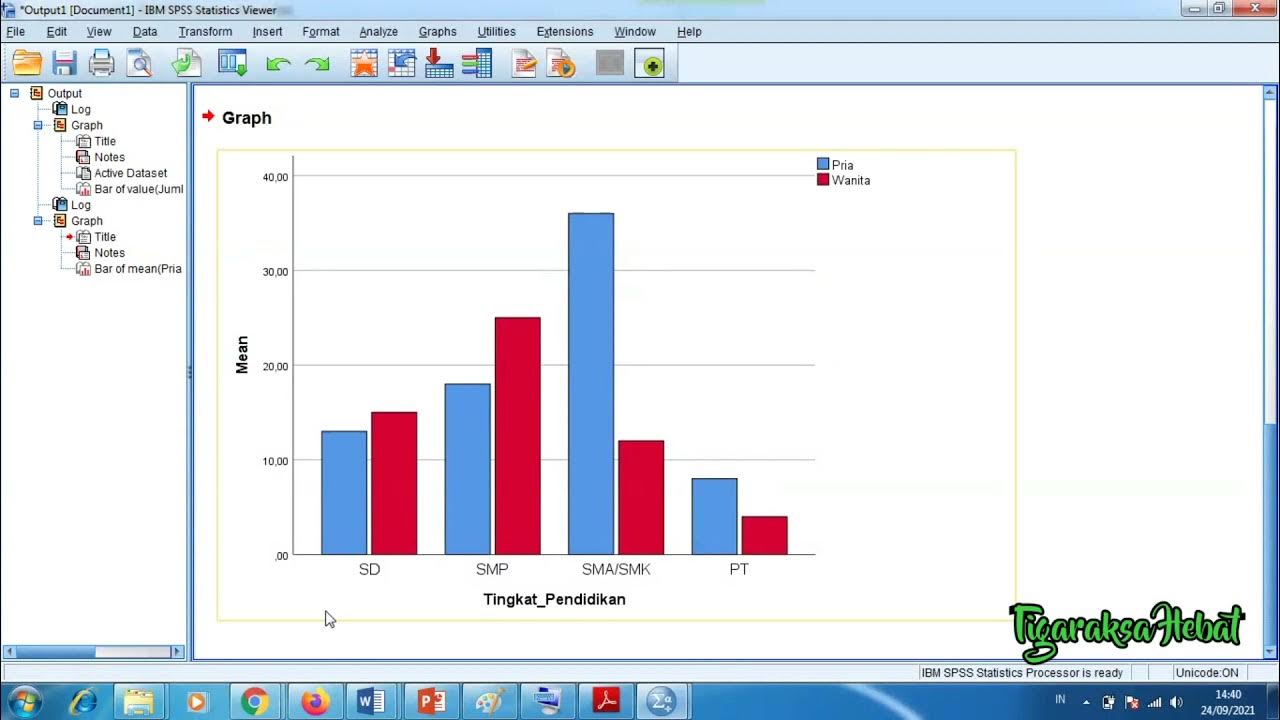Statistik : Penyajian Data - part 2
Summary
TLDRThis video explores different types of data visualizations, including line graphs, pictograms, and pie charts. Line graphs are used to track continuous data over time, such as student enrollment figures. Pictograms represent large numbers using icons, making data more accessible, like illustrating TV sales. Pie charts are effective for displaying percentage-based data, such as the distribution of vehicle ownership among employees. The video demonstrates each visualization method with practical examples, helping viewers understand when and how to use these tools for presenting data clearly and effectively.
Takeaways
- 😀 Diagrams are effective for representing continuous data, such as line charts, and can also be used for categorical or qualitative data.
- 😀 In creating a line diagram, data points are plotted for each year, and a line connects these points to visualize trends over time.
- 😀 A line chart example included data for the years 2011 to 2016, with specific data points like the number of students or sales for each year.
- 😀 Diagrams can be made using symbols, known as pictograms, where each symbol represents a specific quantity (e.g., 1 TV symbol = 1000 TVs).
- 😀 Pictograms help simplify large datasets, making them more visually accessible and easier to interpret for larger numbers.
- 😀 An example of using pictograms was given with television sales from 2003 to 2004, where the symbols represented quantities in thousands.
- 😀 Another example illustrated the use of pictograms to represent the growth of four-wheeled vehicles in a country over several years.
- 😀 For pie charts, it’s crucial first to calculate the percentage share of each category in relation to the total data.
- 😀 In pie charts, the data is divided into segments, with each segment representing a proportion of the total, such as the number of employees with different vehicle types.
- 😀 In pie chart creation, each segment's percentage is translated into the area of the slice to represent the corresponding data category visually.
Q & A
What is the main focus of the diagram being discussed in the script?
-The main focus is on different types of data visualization, specifically line graphs, pictograms, and pie charts, to represent continuous data and categorical data.
When is a line graph most useful?
-A line graph is most useful for displaying continuous data over time, such as tracking trends or patterns across multiple years or periods.
How do you create a line graph using data points?
-To create a line graph, first identify the data points, plot them on the graph with appropriate X and Y axes, and then connect the points with lines to represent the data trends.
What is the role of pictograms in data visualization?
-Pictograms are used to represent data values visually with symbols, making it easier to understand large values by representing them as pictures or icons, such as using a TV symbol to represent 1000 units.
What is the benefit of using symbols in a pictogram?
-The use of symbols in a pictogram simplifies the presentation of large numbers and makes the data visually more accessible by associating each symbol with a specific quantity.
How is a pie chart constructed and what does it represent?
-A pie chart is constructed by calculating the percentage of each category’s data relative to the total. Each segment of the pie represents a portion of the whole dataset, making it easy to compare relative proportions.
What data is shown using a pie chart in the script?
-The pie chart in the script represents the types of vehicles owned by employees in a company, showing the percentage of employees with cars, motorcycles, bicycles, and no vehicles.
How do you calculate the percentage for a pie chart?
-To calculate the percentage for each category, divide the number of individuals in that category by the total number of individuals, then multiply by 100 to get the percentage.
What is the purpose of using a line graph instead of a bar chart for certain data?
-A line graph is preferred when you need to show the relationship between data points over time, as it highlights trends and patterns more effectively than a bar chart, which is better suited for categorical data.
What does the script suggest about rounding data when using pictograms?
-The script suggests rounding the data to the nearest convenient value when using pictograms, to simplify the representation and ensure the symbols used accurately reflect the data.
Outlines

Cette section est réservée aux utilisateurs payants. Améliorez votre compte pour accéder à cette section.
Améliorer maintenantMindmap

Cette section est réservée aux utilisateurs payants. Améliorez votre compte pour accéder à cette section.
Améliorer maintenantKeywords

Cette section est réservée aux utilisateurs payants. Améliorez votre compte pour accéder à cette section.
Améliorer maintenantHighlights

Cette section est réservée aux utilisateurs payants. Améliorez votre compte pour accéder à cette section.
Améliorer maintenantTranscripts

Cette section est réservée aux utilisateurs payants. Améliorez votre compte pour accéder à cette section.
Améliorer maintenantVoir Plus de Vidéos Connexes

Penyajian Data (Part-1) ~ Tabel dan Diagram (Materi PJJ Kelas VII / 7 SMP)

PENYAJIAN DATA DALAM BENTUK TABEL & DIAGRAM || PENGOLAHAN DATA

Penyajian Data Kelas 7 - Menyajikan Data Dalam Tabel dan Diagram | Jenis Diagram | Statistika

1 PENYAJIAN DATA - STATISTIKA - KELAS 7 SMP

Penyajian Data Statistik Menggunakan SPSS

Membaca Grafik Dalam Bahasa Inggris || Eni Kesuma
5.0 / 5 (0 votes)
